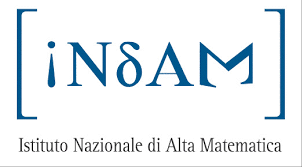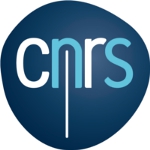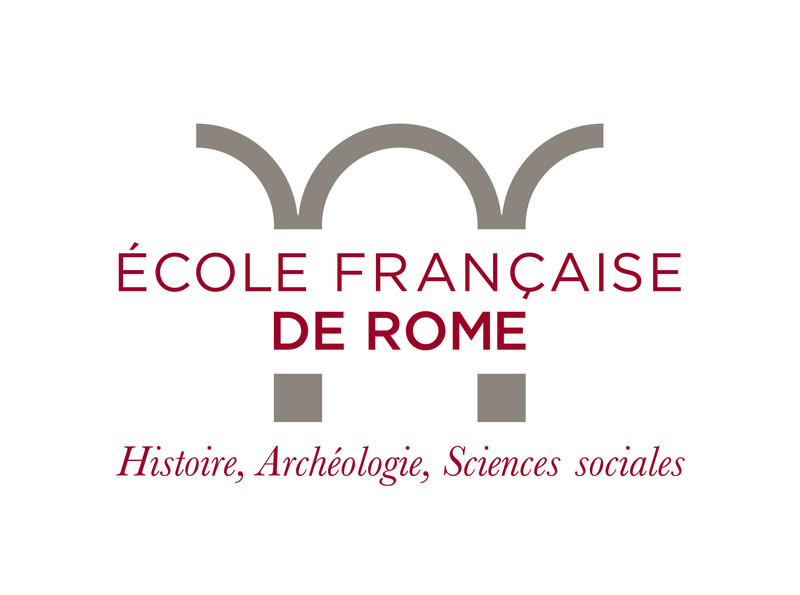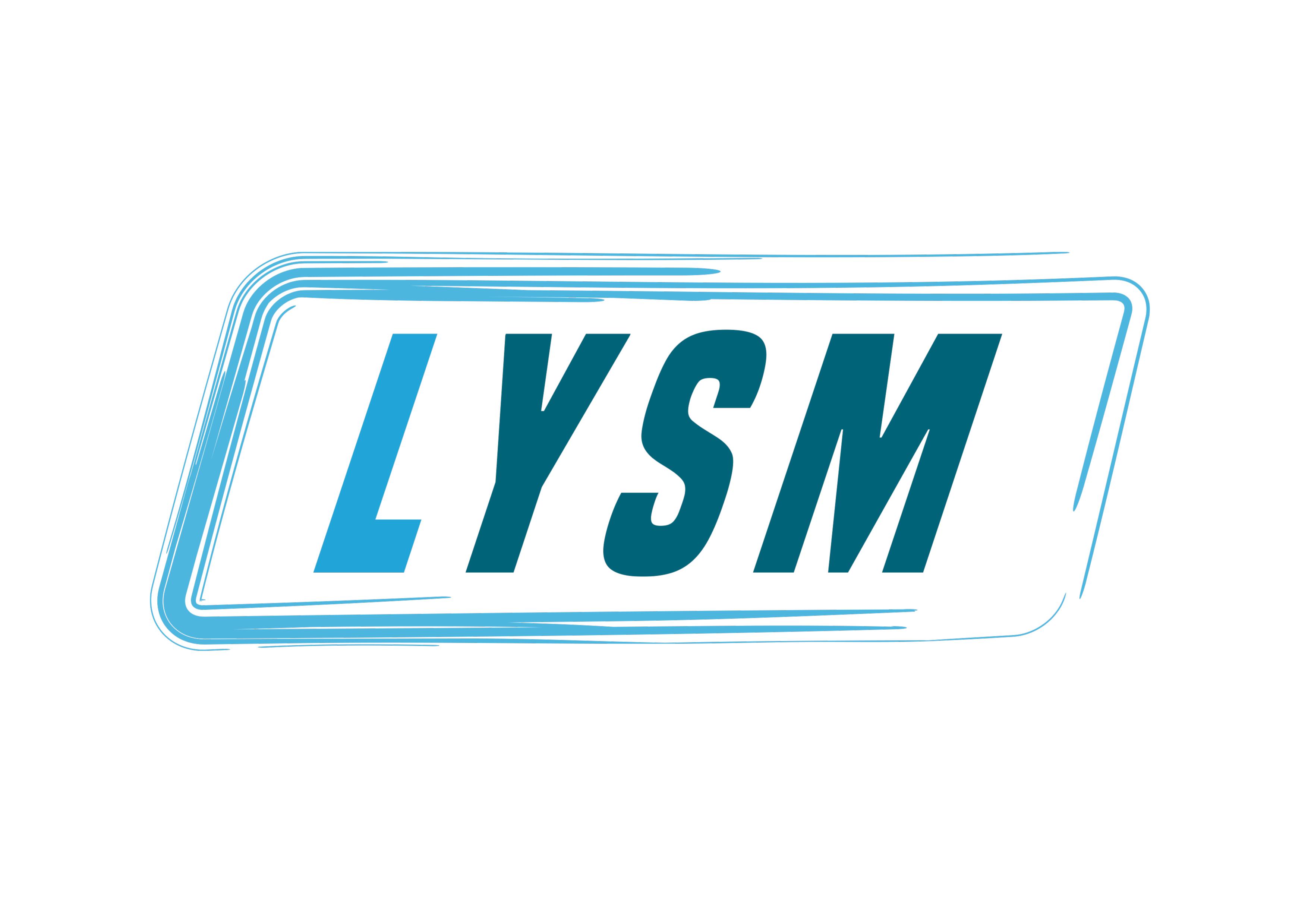Ypatia 2022 - June 8-10, 2022
École française de Rome
MATHEMATICS BETWEEN FRANCE AND ITALY
algebra, analysis, geometry and mathematical physics
The International Research Laboratory IRL LYSM "Ypatia Laboratory of Mathematical Sciences" was created on December 10 2021 by an agreement between the CNRS (Centre National de la Recherche Scientifique), and the INdAM (l’Istituto Nazionale di Alta Matematica).
Its task is to help scientific collaborations by supporting financialy missions and conferences. More generaly, LYSM want to facilitate scientific exchanges between France and Italy in all fields of mathematics.
Ypatia 2022 will present plenary talks given by ten confirmed mathematicians, and several parallel sessions inviting young researchers.
Ypatia 2022 will present plenary talks given by ten confirmed mathematicians, and several parallel sessions inviting young researchers.
The plenary lectures will be given by Serge CANTAT, Lucia CAPORASO, Alain CONNES, Alessandra FAGGIONATO, Alessio FIGALLI, Giovanni GALLAVOTTI, François GOLSE, Roberto LONGO, Curtis McMULLEN and Claire VOISIN.
The lectures of the thematic sessions will be given by Joackim BERNIER, Paolo BONICATTO, Alessandro CARDERI, Serena CENATIEMPO, Roberto FEOLA, Rafael L. GREENBLATT, Jessica GUERAND, Liana HEUBERGER, Laurent LAFLECHE, Omar MOHSEN, Alessandro ONETO, Gianluca ORLANDO, Chiara SAFFIRIO, Vittoria SILVESTRI, Yoh TANIMOTO, Fabio TANTURRI, Sara TORELLI and Vito ZENOBI.
Scientific committee: Dario Bambusi, Cinzia Bisi, Benoît Claudon, Adriana Garroni, Alessandro Giuliani, Daniele Guido, Massimiliano Mella, Thierry Paul, Pierre Picco, Alessandra Sarti, Sandro Vaienti and Stéphane Vassout.
Organization committee: Adriana Garroni, Massimiliano Mella, Thierry Paul and Alessandra Sarti.
 m
m 








-
-
08:30
→
09:00
Opening, registration Ecole Française de Rome
Ecole Française de Rome
-
09:00
→
09:30
Official words:: Christophe LEMOINE, Ministre Conseiller de l'Ambassade de France en Italie, Jean-Stéphane DHERSIN, Directeur Adjoint Scientifique de l'INSMI, Giorgio PATRIZIO, Presidente dell'INdAM, Alessandro GUILIANI. Directeur du LYSM: Official words: Christian MASSET, Ambassadeur de France en Italie, Jean-Stéphane DHERSIN, Directeur Adjoint Scientifique de l'INSMI, Giorgio PATRIZIO, Presidente dell'INdAM, Alessandro GUILIANI. Directeur du LYSM Salle de Conférences de l'Ecole Française de Rome
Salle de Conférences de l'Ecole Française de Rome
-
09:30
→
10:30
Abstract: The Tits alternative, initially proven by Jacques Tits around 1972, concerns the structure of groups of matrices, more precisely of subgroups of GL(V ) for any finite dimensional vector space V . As we shall see, there are three interacting perspectives in the Tits alternative, coming from algebra, geometry, and dynamics. What is the precise statement and the meaning of this alternative? How is it proven? Does it hold in other groups, for instance in groups of diffeomorphisms of compact manifolds, or in groups of algebraic transformations? I will discuss these questions at an elementary level, with a focus on explicit examples and an emphasis on the dynamical systems viewpoint.
-
09:30
→
10:30
Serge CANTAT "The Tits Alternative"
-
10:45
→
11:15
Coffee break and end of registration Galerie de l'Ecole Française de Rome
Galerie de l'Ecole Française de Rome
-
11:15
→
11:35
AMP: P. Bonicato "Moving currents: on the Lie transport equation"
-
11:15
→
11:35
Abstract: In the classical theory, one usually studies the transport equation looking for solutions in the class of functions. In the seminar I will talk about recent efforts, motivated by the modeling of defects in plastic materials, aimed at extending this theory to the case where the unknown is represented by $k$-currents in $R^d$ , i.e. generalised $k$-dimensional surfaces. I will explain the main challenges this problem presents and some recent results based on an ongoing project with G. Del Nin and F. Rindler (University of Warwick).
-
11:35
→
11:55
AMP,: Chiara Saffirio "Mean-field evolution of many interacting fermions"
-
11:35
→
11:55
Abstract: We will review recent progresses in the derivation of effective evolution equations for the dynamics of many weakly interacting fermions. We will focus on the mean-field regime and couple it with a semiclassical limit to obtain the Hartree-Fock and the Vlasov equations. We will compare the different methods used in this context and draw a comparison with results and methods employed in the case of classical particles. A particular emphasis will be given on the class of interactions and quantum states that we are able to treat.
-
11:55
→
12:15
AMP,: L. Lafleche "From many-body quantum dynamics with singular potentials to Vlasov equation: regularity and weak-strong uniqueness"
-
11:55
→
12:15
Abstract: In this talk I will present several techniques and concepts used in the context of the mean-field and the classical limit allowing to go from the N -body Schrödinger equation to the Hartree-Fock and Vlasov equation, linked to works in collaboration with Chiara Saffirio and Jacky Chong. To understand how close these equations are in the case of singular potentials such as the Coulomb potential, one possibility is to use weak-strong uniqueness principles and understand the similarity of the models to prove the propagation of a semiclassical notion of regularity uniformly in N and h. A typical obstacle is then the lack of positivity of the Wigner transform and its few conserved quantities. A solution to this problem is to consider operators and a quantum analogue of Sobolev spaces defined using Schatten norms. The absence of commutation requires however sharp bounds on commutators of operators without assuming high regularities.
-
12:30
→
13:30
Abstract: In algebraic geometry, moduli spaces parametrize equivalence classes of certain geometric objects (curves of given genus, abelian varieties of given dimension, ...). They carry a remarkable geometric structure governed by the deformation theory of the parametrized objects, and as such they are rarely complete. Constructing a geometrically meaningful completion for them is crucial for applications, and has been a widely investigated problem since the half of the 20th century. The talk will describe some general aspects and recent developments, focusing on the cases of curves and abelian varieties.
-
12:30
→
13:30
Lucia CAPORASO "Moduli spaces and their completions"
-
13:45
→
15:15
Lunch offered to all participants, avec une presentation of the École françaisw de Rome par Brigitte MARIN, Directrice. Galerie de l'Ecole Française de Rome
Galerie de l'Ecole Française de Rome
-
15:15
→
15:35
AGT: S. Torelli "Holomorphic one forms on moduli of curves",
-
15:15
→
15:35
Abstract: The moduli space $\mathcal{M}_g$ of smooth projective curves of genus $g$ is a quasi-projective variety, singular on loci of dimension at most $2g-1$. Let $\mathcal{M}^0_g$ denote its smooth locus. Not much is known about the cohomology $H^i(\mathcal{M}^0_g, \mathbb{C})$ and even less about the spaces of holomorphic forms $H^i(\Omega^j_{\mathcal{M}^0_g})$. Notice that $\mathcal{M}_g$ is not compact, so in particular it doesn't carry a Hodge decomposition and thus $H^i(\Omega^j_{\mathcal{M}^0_g})$ can't be recovered from $H^i(\mathcal{M}^0_g, \mathbb{C})$ just using Hodge theory. In the talk I will present the result for $i=1,j=0$, namely that $\mathcal{M}_g$ do not admit holomorphic 1-forms, and I will briefly discuss its generalization to other moduli spaces realized as finite coverings of $\mathcal{M}_g$ (e.q. spin curves). The techniques comes from Hodge theory on the Deligne-Mumford compactification and intersection theory on the Satake compactification of $\mathcal{M}_g$. The work is joint with F.F. Favale and G.P.Pirola.)
-
15:35
→
15:55
AGT, O. Mohsen; "An introduction on maximally hypoelliptic differential operators".
-
15:35
→
15:55
Abstract:Maximally hypoelliptic operators are differential operators which enjoy regularity properties very similar to that of elliptic operators. I will give a brief introduction on maximally hypoelliptic differential operators, focusing on recent developments in the subject like index theory and principal symbol. No prior knowledge of elliptic operators is assumed for the talk.
-
15:55
→
16:15
AGT,: Y. Tanimoto "Unitary vertex algebras and Wightman conformal field theories",
-
15:55
→
16:15
Abstract: We report recent progress on the axiomatic approaches to two-dimensional conformal field theory. We prove the equivalence between unitary vertex operator algebras and Moebius-covariant Wightman fields with some analytic conditions. Sufficient conditions to construct conformal nets will also be discussed.
-
16:30
→
17:30
Abstract: The optimal transport problem studied by Monge (1781) and Kantorovich (1942) provides a general method for metrizing the set of Borel probability measures on $\mathbf R^d$. The purpose of this talk is to present an analogous method for comparing density operators on $L^2(\mathbf R^d)$, which are the quantum mechanical analogues of probability measures on the phase space $\mathbf R^d\times\mathbf R^d$. We shall discuss some properties of the ``pseudo-distance’’ on quantum states obtained in this way, and show applications to some problems in quantum dynamics. (Based on joint works with E. Caglioti, C. Mouhot, T. Paul).
-
16:30
→
17:30
François GOLSE "Optimal transport distances in quantum mechanics"
-
17:45
→
17:46
End of the first day
-
08:30
→
09:00
-
-
09:00
→
10:00
Abstract: We consider two classes of objects: resistor networks and stochastic particle systems with hard-core interaction and symmetric jump rates. The geometrical setting is random: nodes and possible particle locations, respectively, form a simple point process in R^d. Further randomness is allowed in the environment. Our target has been to derive the scaling limit of the directional conductivity and the hydrodynamic limit of the particle density, respectively, for universal classes, under stationarity and ergodicity. The characters of this story are a probability space, the actions of the abelian group R^d (or Z^d), a simple point process and a conductance field. In the scaling limit they will merge indissolubly to produce the effective homogenized matrix, which will dictate the limiting behavior. We will also briefly discuss some applications to computational geometry and to electron transport in doped semiconductors.
-
09:00
→
10:00
Alessandra FAGGIONATO "Random geometry, stochastic homogenization and large scale limits"
-
10:15
→
10:35
AGT: L. Heuberger "Combinatorial Reid’s recipe for consistent dimer models"
-
10:15
→
10:35
Abstract: Reid’s recipe is an equivalent of the McKay correspondence in dimension three. It marks interior line segments and lattice points in the fan of G-Hilb, i.e. a crepant resolution of C 3 /G for G ⊂ SL(3, C), with certain nontrivial irreducible representations of G. Our goal is to generalise this by marking the toric fan of a crepant resolution of any affine Gorenstein singularity, in a way that is compatible with both the G-Hilb case and its categorical counterpart known as Derived Reid’s Recipe. This is joint work with Alastair Craw and Jesus Tapia Amador.
-
10:35
→
10:55
AGT: A. Carderi "Space of subgroups"
-
10:35
→
10:55
Abstract: This talk will be devoted to the study of the space of subgroups of a fixed countable group. We will see that this space admits a totally disconnected and compact topology and the action by conjugation of the group on it is continuous. We will see some examples and we will discuss some interesting questions about this space.
-
10:55
→
11:15
AGT: V. Zenobi "Higher rho numbers and metrics with positive scalar curvature"
-
10:55
→
11:15
Abstract:Thanks to a realization of the Higson-Roe surgery sequence through the K-theory pseudodifferential operators algebras, we will see how to define fine numeric secondary invariants associated to Dirac operators and give explicit formulas for them. They will be obtained through delocalized Chern characters of K-theory classes into suitable non-commutative homology groups and by pairing them with delocalized cyclic cocycles. As a geometric applications, we will give lower bounds for the rank of the moduli space of Riemannian metrics of positive scalar curvature of a closed spin manifold.
-
11:30
→
12:00
Open coffee break piazza Navona
piazza Navona
-
12:00
→
13:00
Abstract: The classical obstacle problem consists of finding the equilibrium position of an elastic membrane whose boundary is held fixed and which is constrained to lie above a given obstacle. By classical results of Caffarelli, the free boundary is $C^\infty$ outside a set of singular points. Explicit examples show that the singular set could be in general $(n-1)$-dimensional --that is, as large as the regular set. In a recent paper with Ros-Oton and Serra we show that, generically, the singular set has zero $\mathcal H^{n-4}$ measure (in particular, it has codimension 3 inside the free boundary), solving a conjecture of Schaeffer in dimension $n \leq 4$. The aim of this talk is to give an overview of these results.Abstract: The Tits alternative, initially proven by Jacques Tits around 1972, concerns the structure of groups of matrices, more precisely of subgroups of GL(V ) for any finite dimensional vector space V . As we shall see, there are three interacting perspectives in the Tits alternative, coming from algebra, geometry, and dynamics. What is the precise statement and the meaning of this alternative? How is it proven? Does it hold in other groups, for instance in groups of diffeomorphisms of compact manifolds, or in groups of algebraic transformations? I will discuss these questions at an elementary level, with a focus on explicit examples and an emphasis on the dynamical systems viewpoint.
-
12:00
→
13:00
Alessio FIGALLI "Generic regularity in obstacle problems"
-
13:15
→
18:00
Free lunch and afternoon Roma
Roma
-
18:00
→
19:00
Abstract: The moduli space ${\mathcal M}_g$ of compact Riemann surfaces of genus g has been studied from diverse mathematical viewpoints for more than a century. In this talk, intended for a general audience, we will discuss moduli space from a dynamical perspective. We will present general rigidity results, provide a glimpse of the remarkable geodesic curves and surfaces in ${\mathcal M}_g$ discovered during the last three decades, and explain how these algebraic varieties are related to the dynamics of billiards in regular polygons, L-shaped tables and quadrilaterals.
-
18:00
→
19:00
Curtis McMULLEN, "Billiards and Moduli Spaces"
-
19:15
→
19:35
AMP: J. Guerand "Quantitative De Giorgi Methods in kinetic theory"
-
19:15
→
19:35
Abstract: We focus here on one aspect of the Cauchy problem for kinetic equations: the regularity. De Giorgi method which has been introduced to solve the 19th Hilbert problem allows to get Hölder continuity and Harnack inequalities for linear equations with merely measurable coefficients. In kinetic theory this method has been investi- gated but in a non-quantitative way because of one tool of the proof called the intermediate value lemma. We present here a quantitative version of this lemma which makes the De Giorgi method quantitative for the parabolic equation and the kinetic Fokker-Planck one. The second one is a joint work with Clément Mouhot.
-
19:35
→
19:55
AMP: J. Bernier "Dynamics of Hamiltonian PDEs in low regularity"
-
19:35
→
19:55
Abstract: In the last decades, normal form methods have been very successful in showing the long time stability of small and very smooth solutions of Hamiltonian PDEs. This assumption of regularity seems to be technically essential (to compensate the losses due to the small dividers) but, surprisingly, numerical simulations strongly suggest that the stability of small solutions should not depend on their regularity. I will present some recent results in this direction.
-
19:55
→
20:15
AMP: R. Greenblatt The Fermionic constructive renormalization group in 2D statistical mechanics"
-
19:55
→
20:15
Abstract: Taking advantage of the determinantal or Pfaffian form of correlations of certain integrable 2D lattice models (such as the Ising model) makes it possible to represent classes of related non-solvable models in terms of Grassmann integrals, which can be studied using techniques developed for Fermionic quantum field theory to provide a robust description of the large-scale behaviour of these systems near their critical point. I will illustrate this in the context of the Ising model on a discrete torus or cylinder, where the asymptotic form (scaling limit) of some of the correlation functions has been shown to be unchanged (up to a reparameterization) under a variety of modifications of the Hamiltonian.
-
20:30
→
20:31
End of the second day
-
09:00
→
10:00
-
-
09:00
→
10:00
Abstarct: This is joint work with Henri Moscovici in which we show that the ultraviolet spectrum of the selfadjoint extension of the prolate wave operator matches the squares of the zeros of the Riemann zeta function.
-
09:00
→
10:00
Alain CONNES: "The prolate wave operator and zeta"
-
10:15
→
10:45
Coffee break Galerie de l'Ecole Française de Rome
Galerie de l'Ecole Française de Rome
-
10:45
→
11:05
AMP: R. Feola "Quasi-periodic Traveling Waves on an Infinitely Deep Perfect Fluid Under Gravity",
-
10:45
→
11:05
Abstract: We discuss the existence small amplitude, quasi-periodic in time, traveling waves on the surface of an infinitely deep perfect fluid under gravity. The proof uses normal form theory and Nash-Moser scheme to deal with the combined problems of small divisors and the fully-nonlinear nature of the equations. The lack of parameters, like the capillarity or the depth of the ocean demands a refined nonlinear bifurcation analysis involving non-trivial resonant wave interactions, as the well-known “Benjamin-Feir resonances”.
-
11:05
→
11:25
AMP: S. Cenatiempo "Thermodynamic properties of dilute Bose gas"
-
11:05
→
11:25
Abstract: Systems of non-relativistic interacting bosons at zero temperature, in two and three dimensions, are expected to exhibit a fascinating critical phase, famously known as condensate phase. While a proof of Bose-Einstein condensation for generic two body interactions is far from the reach of rigorous analysis, the mathematical physics community has recently gained an enhanced comprehension of the thermodynamic properties of low temperature Bose gases. In this talk we review part of these advances, and present some open problems and perspectives. Based on joint works with G. Basti, C. Boccato, C. Brennecke, C. Caraci, A. Olgiati, G. Pasqualetti and B. Schlein..
-
11:35
→
12:35
Abstract: Viscosity, as a physical property of fluids, reflects an average effect over a chaotic microscopic motion described by Hamiltonian equations. It is proposed, as an example, that stationary states of an incompressible fluid subject to a constant force, can be described via several ensembles, in strict analogy with equilibrium statistical mechanics.
-
11:35
→
12:35
Giovanni GALLAVOTTI, "Statistical ensembles in fluid dynamics"
-
12:50
→
14:20
Lunch offered to all participants Galerie de l'Ecole Française de Rome
Galerie de l'Ecole Française de Rome
Galerie de l'Ecole Française de Rome -
14:20
→
15:20
Abstract: Alice and Bob are conventional placeholders in Information Theory, particularly in Quantum Infor- mation. The study of the amount of information exchanged between Alice and Bob is a basic problem. Quantum Information is a fast-growing subject, that so far has mostly been concerned with finite-dimensional systems. The study of Quantum Information for infinite systems can however be traced back to the ‘70s work by Bekenstein and Hawking on the thermodynamics of a black hole, the wonderland. During the recent years, Operator Algebras have provided the essential language and the methods for a rigorous study of Quantum Information for infinite systems, uncovering new structures. I will review some of the results and of the problems that concern my own work.
-
14:20
→
15:20
Roberto LONGO "Alice and Bob in the Wonderland"
-
15:35
→
15:55
AGT: F. Tanturri Fano varieties as zero loci"
-
15:35
→
15:55
Abstract: Fano varieties are algebraic varieties having ample anticanonical bundle, and owe part of their impor- tance to the role they play in the birational classification of algebraic varieties. In an ongoing research programme in collaboration with Enrico Fatighenti I aim at realizing Fano varieties as zero loci of sections of homogeneous vec- tor bundles. Our goal is twofold: to provide alternative descriptions of known Fano varieties, and to construct new examples thereof. I will briefly discuss the current and future outcomes of this programme.
-
15:55
→
16:15
AGT: A. Oneto "Algebra and Geometry of Tensor Decompositions"
-
15:55
→
16:15
Abstract: Tensors are ubiquitous in several areas of pure and applied mathematics since they are used to represent multi-linear maps as well as storing data. Their additive decompositions provide convenient ways to handle, compress and classify tensors. In this talk, I will present an algebro-geometric framework for studying tensor decompositions through secant varieties and 0-dimensional schemes. I will give an overview on some recent results (on general ranks and identifiability of tensors) and challenging open problems (such as complexity of matrix multiplication tensor) within this fruitful area of applied algebraic geometry.
-
16:25
→
16:55
Free coffee break piazza Navonna
piazza Navonna
-
16:55
→
17:15
AMP: V. Silvestri "How far do Activated Random Walkers spread from a single source? "
-
16:55
→
17:15
Abstract: Activated Random Walks (ARW) is an interacting particle system which is believed to be an example of Self-Organised Criticality (SOC), in that the competition between the particles’ activity and inactivity spontaneously drives the system to a critical state. In this talk I will discuss several notions of criticality and, specialising to ARW on the one-dimensional lattice, I will illustrate how some of them relate to each other. Based on joint work with Lionel Levine (Cornell).
-
17:15
→
17:35
AMP: G. Orlando "Frustration in a spin model: chirality transitions via a discrete-to-continuum variational analysis".
-
17:15
→
17:35
Abstract: Spin models describe magnetic properties of materials. In this talk we will examine a 2-d planar spin model (the J 1 − J 2 − J 3 model) which exhibits frustration, a mechanism that leads to complex geometric patterns in the material. A discrete-to-continuum variational analysis allows us to show that the surface tension between different chiral phases is captured by a suitable continuum energy.
-
17:45
→
18:45
Abstract: Hyper-Kähler manifolds are symplectic holomorphic compact Kähler manifolds, a particular class of complex manifolds with trivial canonical bundle. They exist only in even complex dimension, and there are two main series of known deformation classes of hyper-Kähler manifolds, with one model in each even dimension, that I will describe. I will discuss in this introductory talk a result obtained with Georg Oberdieck and Jieao Song on the complex cobordism classes of hyper-Kähler manifolds, and present a number of open questions concerning their Chern numbers.
-
17:45
→
18:45
Claire VOISIN, "On the complex cobordism classes of hyper-Kähler manifolds"
-
19:00
→
19:01
End of the conference
-
09:00
→
10:00
